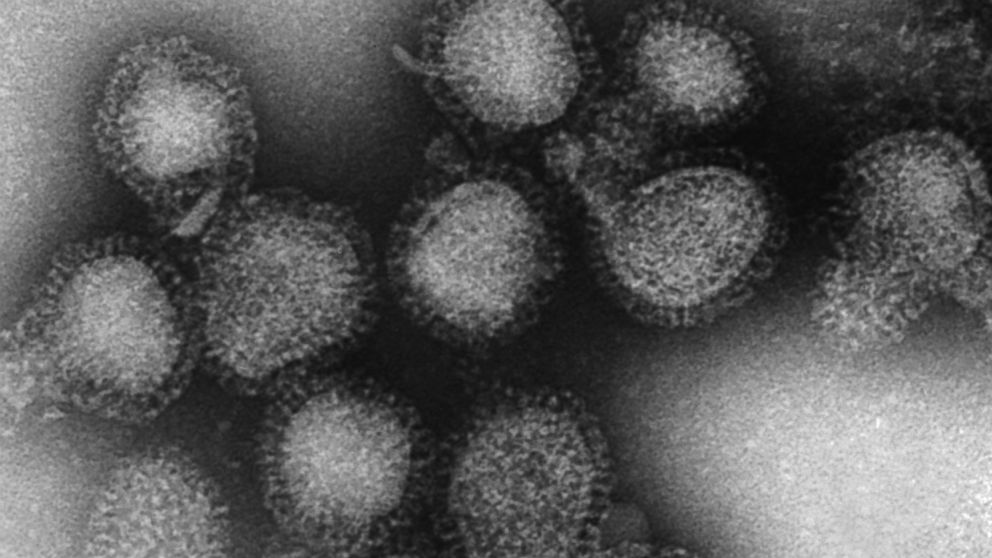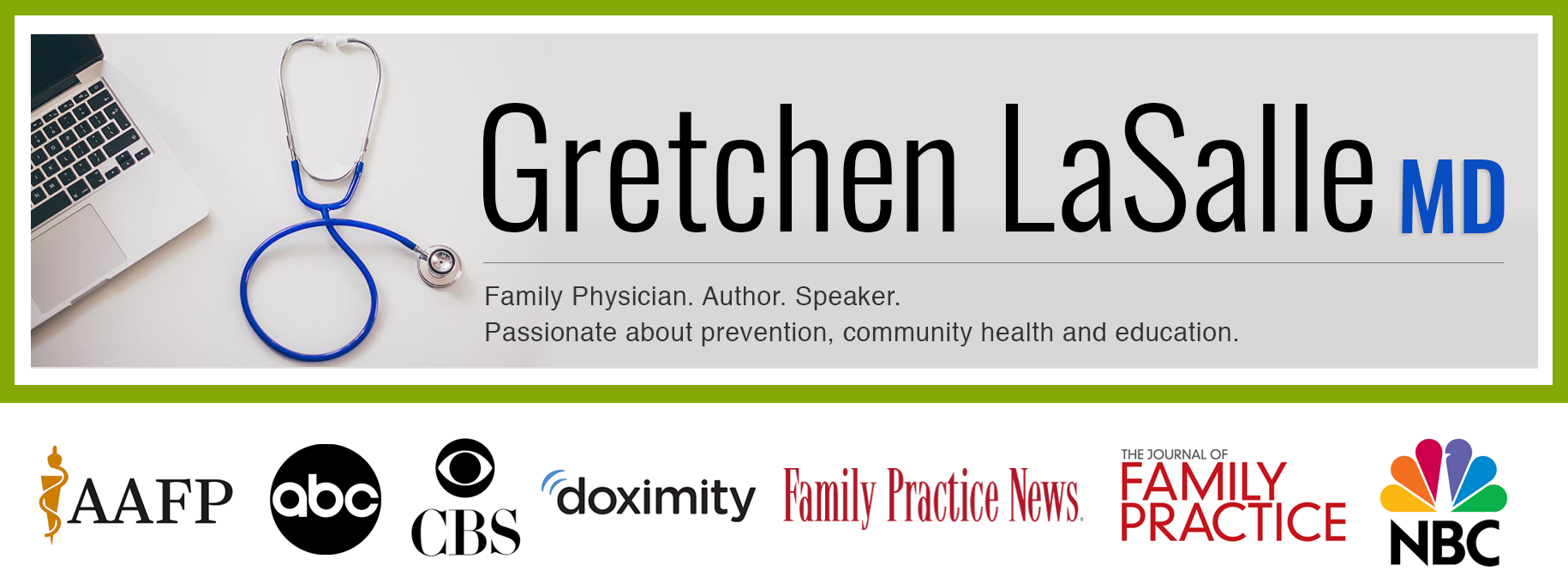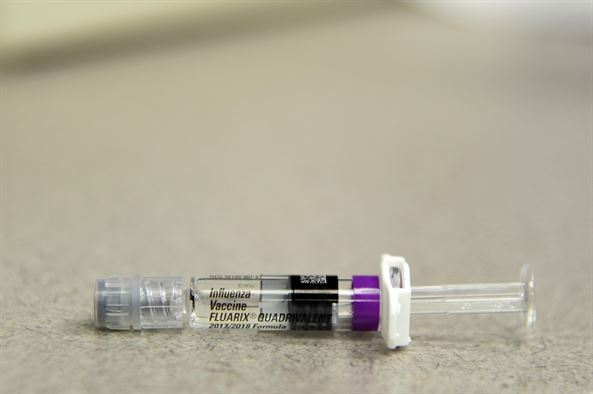It’s that time of year again. As fall approaches, influenza is knocking on the door… but this flu season, AGAIN, promises to be far from typical. We are smack dab in the middle of a pandemic – still! COVID19 has devastated lives and livelihoods. The Delta variant is a monster and, even though we now have very highly safe and effective vaccines, not enough people are immunized yet to gain control over the virus. There seems to be no quick and easy end in sight. Now add to that the potential for just a run-of-the-mill flu season, where millions are infected, hundreds of thousands are hospitalized, and tens of thousands die. If we don’t handle this perfect storm of infectious diseases properly, we risk further overwhelming our medical system (whose staffing situations are even more dire than last year) and seeing further unnecessary loss of life and enormous costs to society. PREVENTION has never been more important! So, read on for your yearly tutorial. It’s Flu Vaccine 101: Pandemic Edition!
This time of year we medical providers spend hours upon hours working to get our patients vaccinated against the flu. We KNOW the terrible consequences it causes. But we not uncommonly encounter folks who mistakenly think that the flu is no big deal. Some have heard faulty information from friends, family or on the Internet where untruths “go viral”, spreading rapidly and with ease, leading to the unfortunate decision not to vaccinate.
If you are one of those folks considering not getting a flu vaccine this year, PLEASE read on. I’m about to let you in on some facts and fictions about the flu shot that may change your mind about this life-saving vaccine. Getting the flu vaccine this year will be MORE IMPORTANT THAN EVER!
But first… a little clarification about the influenza virus.

This 1975 electron microscope image made available by the Centers for Disease Control and Prevention shows a group of H3N2 influenza A virus virions.
Every day I get folks telling me that they got the flu shot but that they were “sicker that year than ever before”. The flu shot was never meant to be a one stop shop for preventing illness. There are numerous other viruses out there (as we now well know) that can cause a flu-like illness that are not the flu.
Here is what true influenza looks like. It comes on suddenly. One day you’re fine. The next day it feels like you were hit by a truck. Your whole body hurts. You have a high fever, cough, headache, sore throat, and fatigue. It lasts, typically, a week. Unless, of course, you have complications of the flu that may linger longer.
Also, the “stomach flu” is NOT the flu. This is a viral stomach bug. Only occasionally does a person with the flu have vomiting (maybe a little more common in kids than adults) and diarrhea is not part of the picture. If you’ve got vomiting and diarrhea, you’ve got something else and the flu shot doesn’t help with that – I wish it did. I HATE vomiting!
Now, unfortunately, COVID19 can look exactly the same way… or not. It behaves so differently for different people. As we get into flu season, if people aren’t vaccinated against the flu, it is going to be EXTREMELY difficult to tell which respiratory illness you have. And when we can’t tell (knowing that our tests for both flu and SARS-CoV-2 have limitations), we will have to default to isolating anyone with possible COVID-like symptoms. Limiting the number of people infected with the flu will make life at least a little bit simpler for those doctors and nurses trying to take care of people this fall and winter; not to mention for those of us just trying to get on with living our lives as normally as possible. And getting a flu shot can keep you out of the urgent care or ER, places you could come into contact with the SARS-CoV-2 virus!

Is it the Flu? Is it COVID19? How will we know the difference? Image from Pixabay of sick boy with fever.
Ok, now let’s look at some fictions about the flu shot.
Fiction #1: “The flu shot causes the flu.”
This, my friends, is false. The flu shot is a killed virus vaccine and, as such, cannot cause the illness it is meant to protect against. It’s a different story for the influenza nasal spray vaccine. The nasal spray version uses a live-attenuated or weakened form of the flu virus. It should not be given to anyone with a suppressed immune system because it could give them influenza.
“But I felt so cruddy after the shot. It must have made me sick.”
Scenario #1: It is not uncommon to feel a bit under the weather after the flu shot – or any shot, for that matter. A bit of achiness, mild fatigue, even low grade fever is considered a normal response and is just your body’s immune system kicking into gear. It is NOT the flu. Trust me. The flu is much worse.
Scenario #2: It takes 2 weeks before the flu shot even works and it is possible to be exposed to and contract the flu in that 2 weeks when you are not yet protected. This is why it is SO important to get your flu shot in the early fall. That way, by the time we see the flu in the winter months, your immune system is ready for the fight.
Fiction #2: “The flu shot doesn’t really work.”
Au contraire, mon frere. Even though the flu shot is the “best guess” for what strains will be circulating that year and is not always spot on, it still protects you from serious complications of the flu (like hospitalization and death).
The Northern and Southern Hemisphere flu seasons are exactly opposite of each other. We look to the Southern Hemisphere’s flu season to try to predict what is heading our way. Some years’ guesses are better than others but that doesn’t mean the vaccine is not worth getting. We know this from looking at data regarding people who died from the flu.
The CDC looked at all of the pediatric deaths during the 2012-2013 flu season and found that 90% of these deaths had been in children not vaccinated for the flu. And since the flu vaccine was introduced in 1938, whether entirely causally related or not, we have not seen a flu pandemic such as the 1918 Spanish Flu that killed nearly 50 million people. The flu vaccine works. Moving on.
Fiction #3: “I’m Healthy. I don’t need a flu shot. I’ll get over it.”
Well, maybe. But even healthy people have serious complications from the flu like pneumonia, respiratory failure, and death. It is true that those with chronic illness, the elderly, babies, and pregnant women are at greatest risk. But remember those children who died in 2012-2013 from the flu? 40% of those kids had absolutely NO chronic illness or other risks for serious complications.
And so what if you are healthy and you do get over it? What about all of those around you? What about those you come into contact with out in the world? Shouldn’t we try to protect each other and keep each other healthy as well? You. Yes, you. You are contagious for approximately 2 days before you even have one symptom. And there you are, out there in the world touching things, shaking people’s hands (well, maybe not anymore since COVID), and spreading germs that you don’t even know you have.
Now, imagine this…. What if you got COVID19 AND the flu at the same time? It has happened. No matter how healthy you are, this would be a disaster.
Fiction #4: “I prefer to get my immunity naturally.”
Nope. It doesn’t work that way with the flu. The flu strains change each year. Having the flu one year does not prevent you from getting the flu the next year.
Fiction #5: “I can’t get the flu shot. I have an egg allergy.”
Good news! Those recommendations have changed. As of the 2016-17 flu season, the CDC now recommends the flu shot for everyone, even those allergic to eggs. If you can eat cooked eggs without difficulty or have a milder version of an egg allergy, you can get a flu shot at any location. If you have a serious egg allergy (stopping breathing, repeated vomiting, etc.), you can still get the flu vaccine but have to have it administered by a physician who can recognize and respond to a severe allergic reaction.
And if you just can’t get past the worry about an egg-allergy reaction, there are two vaccines available (Flucelvax, for ages 4+, and Flublok, for ages 18+) which are not produced using chicken eggs. So, no excuses. Get out there and get your flu shot!
We’ve learned what’s not true about the flu shot. Now, let’s lay down some facts!
Fact #1: The flu can be extremely serious – even deadly
You are more likely to have serious consequences from the flu than from the other infections for which we more readily vaccinate. In 2015 we had our first measles-related death in over a decade. By contrast, the Centers for Disease control and Prevention estimates between 9.2-35.6 million cases, 140,000-710,000 hospitalizations, and 12,000-56,000 deaths from the flu in the U.S. annually.
The inflammatory storm that occurs during a flu infection can result in sepsis, respiratory failure, organ failure, and a six-fold increased risk of heart attack and stroke in the days following infection. While all are at risk, serious cardiovascular events following flu seem to more commonly impact those over 65 years old. By the way, these are also the people most at risk for complications of COVID19, another virus that can have serious negative effects on the cardiovascular system.
In the 2017-18 flu season, 80,000 patients died, including 186 children. In the 2018-19 flu season, over 61,000 people died. Grandparents, babies, moms, dads… so many lives needlessly lost. Statistically speaking, you should absolutely get your flu shot.
PS – Please don’t use this as reason not to vaccinate for measles or other vaccine-preventable diseases. Vaccination is the reason we don’t have the number of deaths from these illnesses that we used to have. Indeed, we are now getting a glimpse of what life is like when we DON’T have a vaccine against deadly disease. We are seeing what this can do to the health and wealth of both individuals and communities. And, during the pandemic, we saw routine immunization rates, for things like measles, drop up to 40% across our state. And measles requires up to 95% of the population to be immune to keep this deadly disease from returning. Now is not the time to get lax about vaccinating.

We are living the stark reality of what life is like when people don’t immunize. We HAVE a vaccine for the flu. We HAVE a vaccine for COVID. Let’s use them! Image adapted from Pixabay.
Fact #2: There is NO mercury in individual flu vaccines
Unless you are getting a vaccine drawn from a multi-dose vial, there is no mercury in the flu shot. In fact, there has been no mercury in any U.S. licensed vaccine since 2001. And if you are getting your vaccine from a multi-dose vial, the amount in one pediatric dose is equivalent to eating one 3 oz can of tuna fish. Not so scary, is it? Also, the type of mercury in that multi dose vial is Ethyl mercury (like my sweet Aunt Ethyl, not dangerous at all) which is cleared much more rapidly and is less harmful than Methyl mercury (the kind found more commonly in that can of tuna).
Fact #3: Everyone needs a flu shot
Flu shots are not just for the “high risk”. EVERYONE needs a flu shot – to protect themselves and their loved ones and to protect those more vulnerable in our community. The flu shot can be given as early as 6 months of age, at which time the vaccine is actually given in two doses spread apart by a month. After that, it is one dose per year.
Fact #4: If you are over 65, try to get the “high dose” or “adjuvanted” flu vaccine
As we get older we do not mount as robust an immune response to vaccines as we do in younger years. We also don’t fight off infections as well and are at greater risk of complications from influenza. Armed with this knowledge, “high dose” and “adjuvanted” flu vaccines were created for people over 65 to offer better protection.
Fluzone High Dose first became available during the 2010-11 flu season. It boosts the immune response by containing four times the antigen (or viral protein) load as a regular flu vaccine. This carries with it a slightly higher rate of non-serious adverse reactions (fatigue, body aches, low grade fever).
In the 2016-17 flu season, an alternate “adjuvanted” flu vaccine, called Fluad, also became available for folks over 65. It does not contain greater amount of antigen but uses an adjuvant (a substance that boosts the immune response to an antigen) to help improve effectiveness in the older population. The side effect profile is similar to the high dose vaccine.
The Advisory Committee on Immunization Practices (ACIP) currently does not recommend one of these vaccines over the other. If neither are available, the ACIP does recommend use of the regular, non-boosted, vaccine in adults over 65. Any flu vaccine is better than none at all!
Fact #5: Influenza vaccination is extremely important for pregnant moms – here’s why…

The flu vaccine is extremely important for pregnant moms. Protect yourself and your baby! Image from Pixabay.
Reason 1: Pregnant moms who get the flu are at much higher risk of complications, like pneumonia. Pregnancy is a relatively immune compromised state. We don’t fight off infections as well during pregnancy. Also, that baby pushes up on pregnant moms’ lungs and decreases lung expansion. This is a perfect set-up for a developing pneumonia.
Reason 2: Pregnant moms who get the flu, along with it’s high fever and cough and whole body inflammation, are at a much higher risk of miscarriage and pre-term labor. High fever during pregnancy can also increase risk of neural tube defects and other developmental problems in baby.
Reason 3: The antibodies that moms make in response to the flu vaccine carry over to the baby. Those maternal antibodies help protect babies from influenza during those first months of life when they, themselves, can not yet be vaccinated.
Fact #6: As long as flu is circulating, it’s not too late to get a flu shot.
In an ideal world, everyone gets the flu shot by Halloween. Flu season typically lasts from November until April, some years running as late as May. Because it takes 2 weeks for the flu shot to work, we want to get it before flu season begins. But if you end up not being able to get the flu shot until later, don’t distress. It will still offer protection for the remainder of the flu season.
Other considerations for flu vaccination in pandemic times – Q&A.
- Question #1: Should I get a flu shot if I have COVID19?
Answer – No. The CDC currently recommends that anyone actively suffering a COVID19 infection wait until they meet criteria to discontinue quarantine before getting a flu vaccine.
- Question #2: During the COVID pandemic, will it be safe to go out and get a flu vaccine?
Answer – Yes! Doctor’s offices and pharmacies are actively taking precautions to keep you safe while getting your flu vaccine. This may take different forms, such as spacing out immunization appointments to avoid a flu shot “traffic jam”, fully sanitizing rooms between patients, having folks enter and exit through different doors to keep people from crossing paths, drive-through flu clinics, and more. Call your provider’s office to find out what steps they are taking.
- Questions #3: Can I get the flu vaccine and the COVID vaccine at the same time or close together?
Answer – Yes! The earlier recommendation to separate COVID vaccines from other vaccines by 2 weeks has changed. Now you can get a COVID vaccine and any other vaccine at the same time or in close proximity.
- Question #4: But I heard that we hardly had a flu season last year? Why would I need a flu shot this year?
Answer – We hardly saw any cases of flu last year because public health mitigation measures (masking, distancing, sanitizing) really work! And people were really good about following those guidelines last year. But this year, we are seeing fewer people following these recommendations as strictly. People are gathering together again, kids are back in school, fewer people are working from home. And we are already seeing the return of other dangerous respiratory viruses, like RSV, that were also absent last year. We fully expect return of flu this year and everyone should get their vaccine!
So, when the world feels crazy and out of control, it helps to know that you have the power to make a difference. YOU have the power to protect health and life. So let’s do all that we can do. Let’s prevent everything we can prevent. Wear a mask, wash your hands, socially distance, GET YOUR FLU SHOT and GET YOUR COVID VACCINE!
If you have more questions or concerns… ask your healthcare provider. Don’t let misinformation and misunderstandings keep you from being healthy and safe!
Oh, and when you do get your flu vaccine (or any other vaccine for that matter), don’t forget to #ShowUsYourShot!

#ShowUsYourShot social media campaign to offer a visual to the fact that the majority of Americans still choose to vaccinate!
**Looking for the latest info on the 2020-21 flu vaccine? Check out the CDC’s FAQ page here.
Thanks for joining me. If you are not already on the email list to receive blogposts automatically, hop on over to the home page and sign up! Until next time…


Incredible! This blog looks just like my old one! It’s on a completely different subject but it has pretty much the same page layout and design. Outstanding choice of colors!
Thank you!!
Great delivery. Outstanding arguments. Keep up the
good work.
Very well written.
Well, thank you very much!
Greate share and thanks for this helpfoul content . hope to see more from you .
Good read, enjoyed it!
Only wanna tell that this is extremely helpful, Thanks for taking your time to write this.
Great Writing. 🙂
Love this! I had a great microbiology prof in college and am happy and feel privileged to vaccinate. Any advice to share with my MIL who thinks that it contributes to Alzheimer’s?
Hi Katie!
I, too, LOVED my science professors! Well, I have to say… This is a new one. I’ve never actually heard this concern before! I guess I’d need to know why she thinks it contributes to Alzheimer’s. Do you know what her particular concern is?
Gretchen
I’m so glad you are enjoying the blog! Yes, you can follow me on Twitter @GretchenLasalle!
Hi, Dr. LaSalle. I hope you can help me find some information. Recently some studies have been quoted saying that the influenza vaccine is 40-60% effective. Even the CDC posts this. But the numbers are over the entire population, when only 60% of Americans actually get the flu shot. This is like saying a woman has an X% chance of getting pregnant in a year and neglecting to mention that almost half your sample size is nuns.
Now herd immunity is a wonderful thing, but what I’m looking for is an actual measure of the effectiveness of the vaccine in the individual who gets one. In other words, given 100 people who got their flu shots and 100 people who didn’t, what is the difference in the incidence of infection between those two groups? I know this will vary year to year depending on the strains selected for the vaccine and those in circulation during flu season, but someone has to have at least an approximation.
This is coming up because of the insistence by some (like me) of the importance of a vaccine against the novel coronavirus.
Thanks for this, Lauren. This is probably best answered at the following website: https://www.cdc.gov/flu/vaccines-work/effectivenessqa.htm. We can’t ever truly know the effectiveness at the individual level (because we can’t have a test and control in the same person). But at the population level, I don’t know that we can take herd immunity out of the equation. Observational studies, especially, examine people in real-world situations, not in the more controlled environment of a double-blinded placebo controlled trial (difficult to do, by the way, when everyone is recommended to get a flu shot). In the real world environment, whether I get the flu depends not only on whether I am vaccinated but whether everyone around me is vaccinated. I think we have to try to get people out of their “it’s only about me” mindset – seems to be harder and harder to do these days. The effectiveness of any vaccine is greatest when we can get the greatest number of people vaccinated.